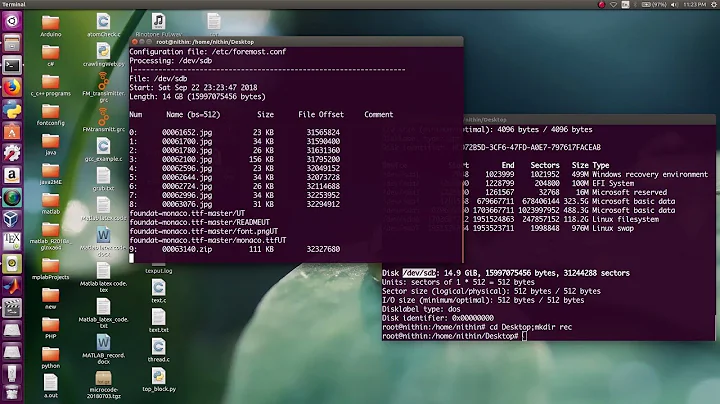CentOS ifcfg-eth0 config file deleted. Utility to recreate it?
Solution 1
There might be a utility, but I don't know what it is. You can just create a file at /etc/sysconfig/network-scripts/ifcfg-eth0 with contents similar to:
DEVICE=eth0
BOOTPROTO=static
ONBOOT=yes
IPADDR=192.168.0.199
NETMASK=255.255.255.0
GATEWAY=192.168.0.1
Solution 2
I use the command: system-config-network-tui
Creating the file by hand is a good answer too, but this will get the MAC address for you.
Solution 3
This may not be valuable anymore to the asker but for someone else, if you have the gui running you can go to System > Preferences > Network Connections and a window will open. Now if you see a device listed there then click on it and just make some edit and save and the file will appear. If no device is listed (will be rare and only if you aren't getting internet connectivity) then you can simply click add and name it eth0 or whatever you like and click save. No need to edit anything, it'll automatically do it all for you.
PS: the file ifcfg-"NAME" is the name you give it in the network connections window when you created it.
Solution 4
So this Worked for me.
History:
I added a new Virtual Network card, whose ifcfg-eth2 file was not generated after a re-boot.
-
I navigated the the network-scripts directory and ran the commands in the below sequence.
# cd /etc/sysconfig/network-scripts # ./net.hotplug # ./ifup-eth # ifup eth2 -- the ifcfg-eth2 file was generated at this point, but was missing the "HWADDR" field -- # system-config-network -- Select your Device and edit settings if needed, before saving the settings -- -- After saving the Configuration settings, the "HWADDR" filed was added as well --
Solution 5
There is a utility called sysconf-network or something like that to allow you to manager the network connections. That is a command line utility.
Here is a link to the FAQ about their /etc/sysconfig system.
Related videos on Youtube
unixman83
Updated on September 18, 2022Comments
-
unixman83 almost 2 years
On CentOS I no longer have a
ifcfg-eth0configuration file (I deleted it). When I runsystem-configure-networkit shows no interfaces that I can edit. How can I recreate theifcfg-eth0configuration file? (Like the CentOS installer does)I can manually do a:
ifconfig eth0 192.168.0.199and then aping 192.168.0.1. But that's not the proper way. How can I do it using the CentOS network scripts?I prefer not to do this by hand as there are many hardlinks and confusing stuff. I am new to CentOS.
-
unixman83 about 13 yearsRunning
system-config-networkseems to be a good idea after recreating the ifcfg-eth0 file. -
Stefan Lasiewski almost 10 yearsThis answer neglects to mention the
HWADDR=field which contains the MAC address of the device. This step is one of the bigger pain points of creatingifcfg-ethNby hand. -
Trevor Boyd Smith over 8 yearsFor me I don't edit these files enough to create from scratch but I can more easily edit one that exists. So this utility is way faster than needing to googling until I find a trusted example. In my case it missed the
ONBOOT=yesvalue so I still had to edit but it was much better than handwriting the whole thing from scratch. -
 knb over 7 yearsOn Centos 7, use
knb over 7 yearsOn Centos 7, usenmtui -
 Admin about 2 yearsOn CentOS 7.9 it works too. Started
Admin about 2 yearsOn CentOS 7.9 it works too. Startednmtui-> Edit a connection -> selected ethX with missingifcfg-ethXfile in/etc/sysconfig/network-script-> Edit -> In my case I wantedautomatic connect-> OK -> Back (exit the program), the result, ifcfg-ethX was created. I have checked the content, looks ok.




